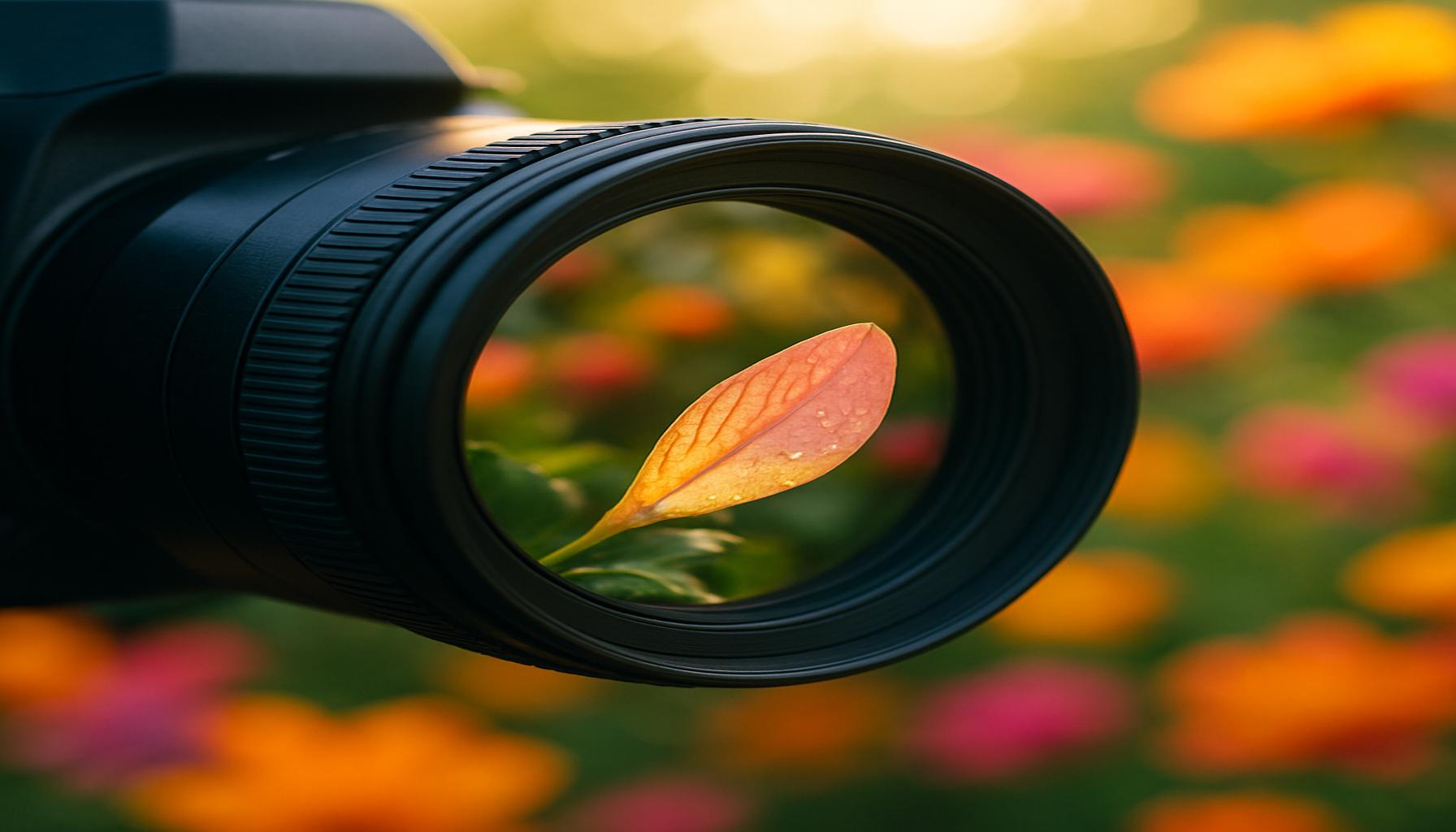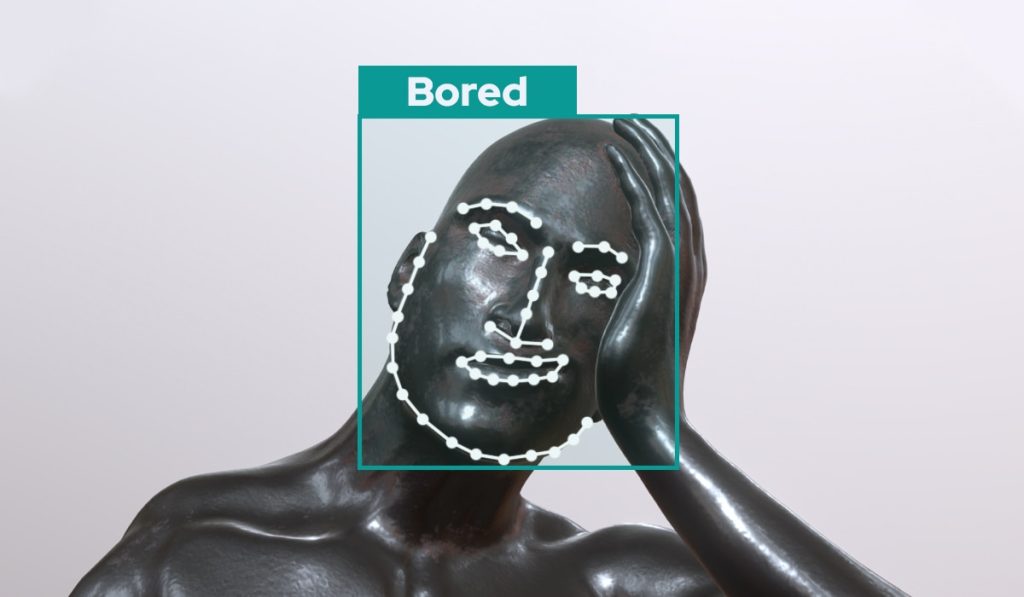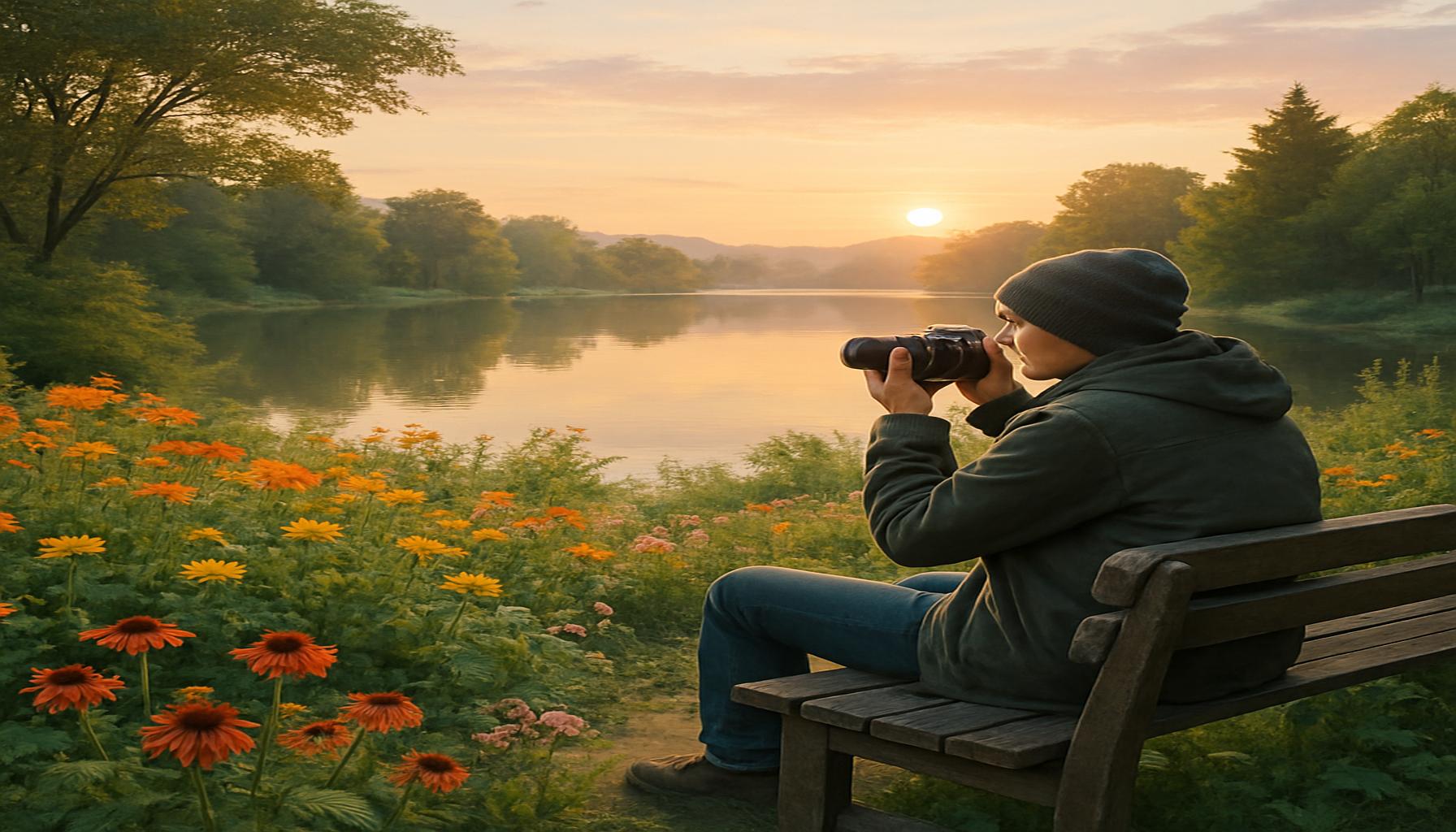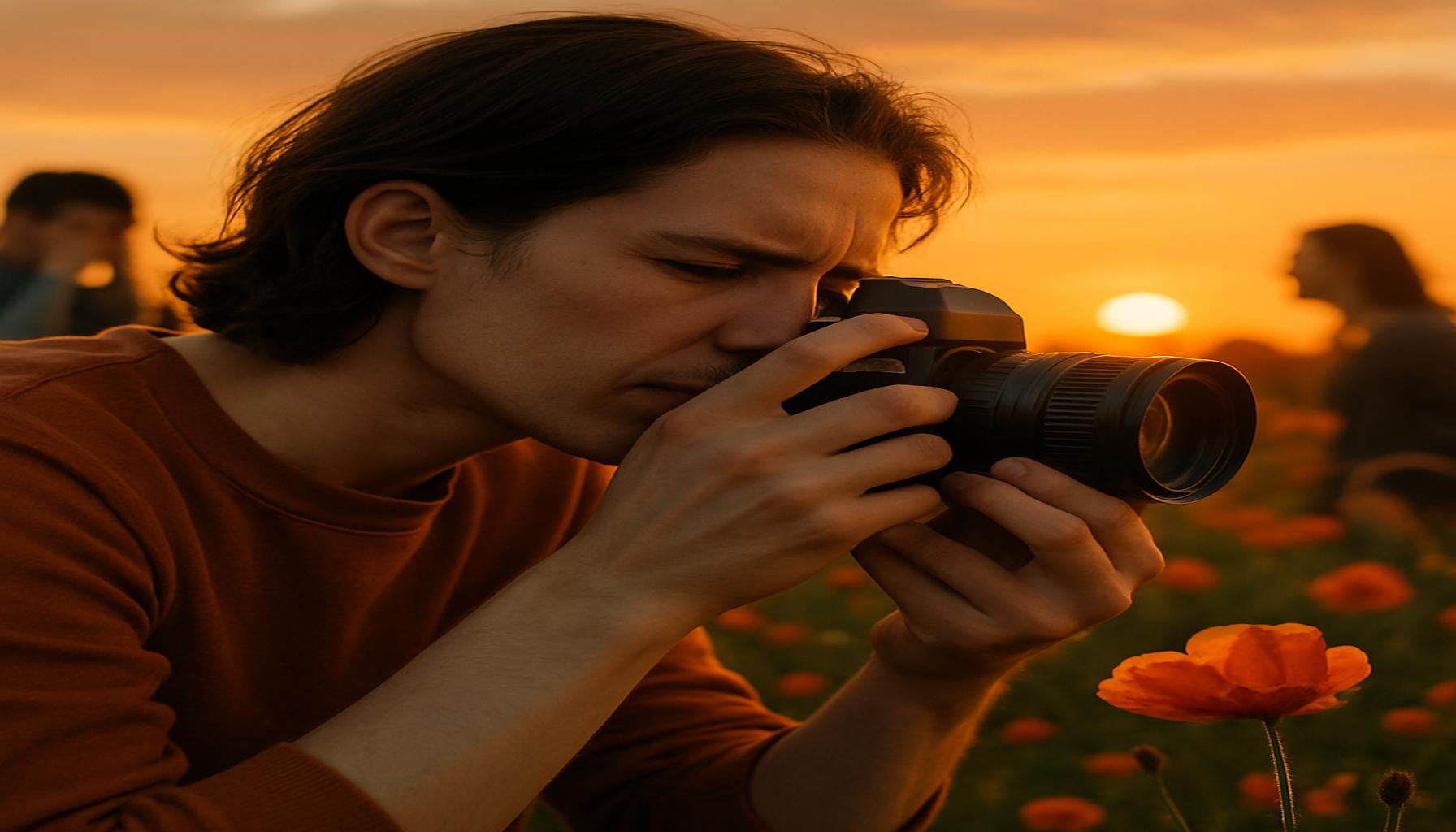Photography and the Sensory Experience: How to Use the Gaze to Create Emotional Connections

Unveiling the Power of the Gaze
At the heart of every compelling photograph lies the ability to evoke emotions. The gaze of the viewer plays a pivotal role in this emotional exchange, influencing how a moment is perceived and felt. Understanding this intricate connection can transform a simple image into a powerful narrative by bridging the gap between the viewer’s experiences and the story being told through the lens.
Why Focus on the Gaze?
The gaze is not merely a passive glance; it’s an active engagement that shapes perception. Photographers can harness this power through various techniques to create an immersive experience. For example, a portrait that captures the vulnerable moment of a child’s laughter elicits joy, drawing the viewer into that shared experience. Conversely, a photo of an elderly person’s contemplative gaze may invoke feelings of nostalgia or empathy.
- Subject Matter: Choose subjects that resonate on a personal level. Images of home-cooked meals can evoke warmth and comfort for many, while stark images of urban life might resonate with those experiencing the hustle of city living.
- Composition: Frame the image to guide the viewer’s eye. Using techniques like the rule of thirds can create a more balanced image, directing focus to the subjects that matter most.
- Lighting: Use natural and artificial light to enhance mood. Soft, warm lights can create a sense of intimacy, while harsh shadows can evoke tension or drama.
These elements converge to create a sensory experience that can deepen the emotional connection between the viewer and the photograph. A well-composed image is not just seen but felt, prompting the viewer to linger, reflect, and connect on a deeper level.
Engagement Beyond the Lens
To captivate an audience, it is crucial to consider how different demographics relate to imagery. An urban scene bustling with life might resonate deeply with city dwellers familiar with its rhythm, portraying their everyday reality. On the other hand, serene landscapes depicting quiet lakes or rolling hills may attract those looking for peace or escape from their fast-paced lives. This varied engagement highlights the importance of context and emotion in visual storytelling.
As we delve deeper into the art of photography, we will explore practical strategies to effectively leverage the gaze of viewers. From understanding the cultural implications of imagery to mastering post-processing techniques to enhance emotional impact, the journey offers multiple avenues to elevate your photographic voice. Join us as we uncover how you can transform everyday moments into profound connections through the lens of your camera, inviting viewers to see the world not just as it is, but as it can be felt.

DISCOVER MORE: Click here to learn about the evolution of crafting
Techniques to Harness the Gaze
Creating emotional connections through photography requires a keen understanding of how the gaze interacts with the elements of the image. Techniques that capitalize on how viewers engage visually can transform an ordinary photograph into a captivating experience. Here are several vital strategies photographers can implement:
- Eye Contact: Capturing subjects who engage directly with the camera can evoke a sense of intimacy and immediacy. A child staring wide-eyed in wonder, or an elderly person with a knowing smile, creates a bond with the viewer that transcends the image itself.
- Perspective: The angle from which a photo is taken can heavily influence the emotional response. Low angles can imbue subjects with a sense of power, while high angles may suggest vulnerability. By thoughtfully choosing the perspective, the photographer can manipulate the viewer’s emotional response.
- Negative Space: Utilizing space around the subject allows for deep reflection. A lone figure against a vast landscape might evoke feelings of solitude, inviting the viewer to ponder the story behind the expression and gaze.
- Color Psychology: Colors convey emotions vividly. Warm tones can evoke feelings of joy and comfort while cooler tones can promote calmness or introspection. Balancing color choices effectively guides the viewer’s emotional experience.
These techniques of engagement shape the viewer’s sensory reaction, making the photograph more than a visual representation—it becomes a shared experience. When a photograph successfully invites viewers to pause and connect, it harnesses the inherent power of the gaze to tell stories of common experiences and evoke a range of feelings.
Creating Stories Through Visual Narratives
Every photograph has a story waiting to unfold, and the gaze is a critical player in this narrative. A fleeting glance at a scene or subject can unveil complex human emotions and shared experiences. It is essential for photographers to recognize that the pursuit of a compelling image goes beyond technical skill; it hinges on the connection established between the subject, the gaze, and the viewer.
For example, capturing a mother tenderly cradling her child may stir feelings of love and protection, triggering nostalgia in viewers who reminisce about their own experiences. Conversely, an image depicting an individual lost in thought, perhaps staring out over a bustling cityscape, invites viewers to explore the depths of their own feelings of isolation or aspiration. The connection formed through the gaze creates a ripple effect, inviting further contemplation and emotional engagement.
In subsequent sections, we will delve into how to refine these techniques, examining how photographers can leverage the cultural and contextual nuances of their subjects to create imagery that resonates deeply with diverse audiences. Join us as we explore the intricate layers that enhance emotional connections and extend beyond mere visual appeal.
Understanding the Power of the Gaze in Photography
In the world of photography, the gaze serves as a critical tool for establishing emotional connections between the subject and the viewer. Utilizing the concept of the gaze helps photographers convey specific narratives, invite the viewer into the scene, and provoke a visceral response. Through careful placement of subjects and a keen awareness of how the gaze directs attention, compelling imagery can be crafted that resonates deeply with audiences.
Inviting the Viewer into the Narrative
The angle and intensity of a subject’s gaze can transform an ordinary photograph into a poignant story. For instance, a portrait where the subject looks directly into the camera can create a profound sense of intimacy. This direct engagement establishes a connection that invites viewers to share in the emotions being portrayed. Alternatively, a gaze directed away from the camera can evoke curiosity or contemplation, drawing the viewer to question what the subject is experiencing.
Framing and Compositional Techniques
Framing plays a significant role in manipulating the gaze. By positioning subjects within their environment, photographers can enhance the emotional landscape of an image. Techniques such as leading lines or the rule of thirds can guide the viewer’s eye towards elements that enhance the story and deepen the emotional impact. Additionally, understanding how light and shadows interact with the gaze can further amplify the desired sensation, making the viewer feel as though they are part of the moment.
Creating Emotional Depth Through Context
Context also plays a crucial role in enriching the sensory experience of a photograph. By incorporating elements that resonate with relatable themes—such as vulnerability, joy, or nostalgia—a photographer can make the emotions more palpable. The gaze, when anchored in a deeply contextualized setting, permits the viewer to viscerally connect with the subject’s experience on a more profound level.In conclusion, employing the gaze successfully in photography opens pathways to emotional landscapes that invite connection and understanding. As you explore the world of photographic storytelling, consider how your choice of composition can influence the viewer’s emotional engagement. By wielding the power of the gaze with intention, you create images that linger in the minds of viewers long after they have moved on, forging connections that resonate on a deeper emotional plane.
DISCOVER MORE: Click here to dive deeper
Engaging Emotions Through the Human Experience
Photography thrives not only on technical prowess but also on the profound human experiences that it captures. When a photographer considers the gaze, they tap into a universal language—the language of emotion. This engagement transforms a static image into a dynamic story, allowing viewers to connect with the subjects on a deeply personal level. Emotional connections are cultivated through relatable experiences that viewers can see themselves in.
Understanding the emotional landscape behind the gaze can further enrich the viewer’s connection to an image. The nuances of facial expressions, body language, and even the environment all contribute to the sensory experience. For instance, a photograph of a couple sharing a quiet moment in a bustling café can evoke feelings of warmth and belonging, allowing viewers to feel as if they are part of that intimate exchange. On the other hand, an image depicting a solitary figure amidst stormy weather may elicit feelings of desolation, urging the audience to contemplate their own struggles.
Leveraging Cultural Context
Another powerful avenue for emotional engagement is the incorporation of cultural context. Photographers who understand the cultural backgrounds of their subjects can imbue their work with layers of meaning. For example, capturing a Native American elder within their community can speak volumes about heritage, resilience, and connection to history. This recognizes not only the individual’s gaze but also the powerful traditions and stories that inform their emotional expressions.
Furthermore, the concept of the gaze is not limited to individuals alone. Community gatherings, cultural rituals, and social movements are often fertile ground for photography that resonates on a collective level. A photograph depicting a crowded protest, with faces reflecting determination and hope, invites viewers to connect with the wider implications of the struggle, creating an emotional pull that transcends the image itself.
- Contextual Emotion: Different settings can reflect varying emotional tones. A serene landscape can evoke peace, while a chaotic urban scene might stir anxiety. Photographers must consider how the chosen environment influences emotional responses.
- Symbolism: Symbols within a photograph, such as a wilting flower or an open door, can carry significant emotional weight. Understanding these symbols allows photographers to craft narratives that speak to shared human experiences.
- Timing: Capturing the right moment—be it a spontaneous laugh or a contemplative silence—can enhance the emotional impact of the image. The anticipation of genuine, candid expressions can often yield the most powerful photographs.
As we delve deeper into the relationship between gaze and emotion, it becomes evident that the art of photography is a rich tapestry woven from light, subjectivity, and connection. By effectively utilizing gaze-focused techniques and embracing cultural and emotional contexts, photographers can transform their work into a compelling invitation for viewers to engage with their own feelings and experiences. The journey through the lens ultimately leads to a space where emotions are not just depicted but felt, inviting each observer to partake in a wider dialogue about the human experience.
DISCOVER MORE: Click here to learn about the evolution of crafting
Conclusion: The Gaze as a Gateway to Emotion
In summary, photography transcends mere images; it thrives on the emotional connections fostered by the power of the gaze. By actively engaging with subjects and their environments, photographers can evoke a spectrum of feelings that resonate deeply with viewers. Understanding the intricate dynamics of facial expressions, cultural contexts, and the subtleties of body language positions photographers to craft narratives that are rich and impactful. Each photograph has the potential to act as a portal, inviting audiences to experience feelings of joy, nostalgia, longing, or even resilience.
As observers, we bring our own stories and emotions to each image, making the process of viewing both personal and communal. The connection that arises when we see ourselves reflected in someone else’s gaze is profound—it speaks to our shared humanity. Thus, the role of the photographer is not just to capture what is visible but also to unearth the emotions lying beneath the surface. This synergy between the art of the gaze and the art of storytelling invites an engagement that is truly sensory.
Ultimately, the essence of photography lies in its ability to foster dialogue—between the photographer and the subject, and between the image and the viewer. By embracing the nuances of emotional storytelling, photographers can transform their work into a compelling exploration of not only the subjects they capture but also the universal human experiences that bind us together. It is this connection, facilitated by the gaze, that makes photography a unique and powerful medium for emotional expression.



